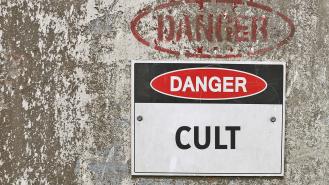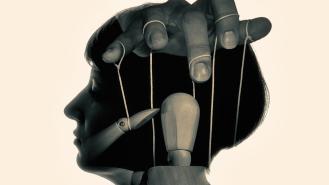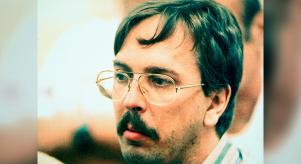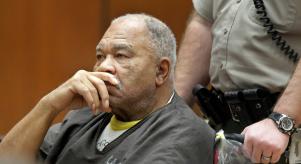
How cults use music to control their followers
Sects, drugs and rock n' roll
If there’s one thing that cults are known for above all else, it’s their ability to dictate their followers’ thoughts, attitudes and behaviours. To be effective, cult leaders have to be dedicated to mastering the dark art of mind control.
There are lots of different ways to seize control over the consciousness of a group of individuals. Classically, the kinds of cynical sects first look to separate their members from their loved ones. They purposefully isolate, confuse and disorientate. Critical thinking and logic are discouraged, threats are made, violence is even used. There are many different tools employed by a skilled brainwasher.
For more information on how cult leaders operate, read our recent article on how The Jonestown Massacre came to take place in our feature,‘The People's Temple: How Jim Jones Controlled His Followers’.
There are two methods of control that dangerous cults and sects will often utilise that aren’t always thought of or spoken about: drugs and music.
We’re going to look at both in some detail here and see how so many of history’s most notorious cults, and the narcissists behind them, have used both drugs and music to manipulate and control people. And it’s almost certain to make for really quite disturbing reading indeed...
Drugs
Narcotics can cause significant psychological alterations in human behaviour. Generally, these changes aren’t positive. When a person gets hooked, the drug often becomes their god. But when there’s an actual god-like figure in the person’s life already, one who controls the flow of drugs, that reliance and dependency are magnified. Put simply - drugs make humans vulnerable. And cult leaders rely on vulnerability in all its forms in order to thrive.
Before assuming the role of counterculture guru and, eventually, murderous cult leader, Charles Manson was a petty crook. Primarily a pimp, he would also move drugs and, given he was operating out of California in the 1960s, he could get hold of LSD pretty much by the truckload. Part of the attraction of hanging out with The Family was the feeling of rebellion. You could stay at the ranch, kick back, play music, talk with like-minded people and get drunk and high for free. Except, of course, it wasn’t really free. The price would be paid later down the line.
Manson would make sure everyone was tripping when he would introduce his increasingly bizarre and violent ideas. The notion of kickstarting a race war by killing a famous actress who was eight-and-a-half months pregnant is so much easier to suggest when your followers are on acid.
Imagined scenarios would be played out to test his followers’ instincts and reactions. Those that showed reluctance to commit a crime or ‘die for their leader’ would be spiked or simply given more hallucinogenic drugs until they were more easily programmable. Soon, Manson effectively controlled an army. One that was happy to do his bidding and kill for him.
The Family weren’t the only cult to use LSD in this way. In fact, they weren’t even the only cult called ‘The Family’ to do so. An Australian new age sect known by that name operated at a similar time under the leadership of a yoga teacher and drug dealer called Anne Hamilton-Byrne. Not only was acid use encouraged, but it was also forcibly injected into children to keep them docile and pliable. Hamilton-Byrne was eventually arrested and currently resides in the mental ward of a secure Melbourne nursing home.
Aum Shinrikyo, the Japanese doomsday cult behind the 1995 Tokyo subway sarin gas attack were also routinely fed LSD to keep them disorientated and easily manipulated by their charismatic - but highly volatile - leader, Shoko Ashara. Not only that but to even get inducted into the group, potential members had to show willing by taking a huge hit of acid. As with most other cults’ use of LSD, it was sold to members as a way of expanding their minds but was, in reality, merely another cynical ploy to steal agency from their followers.
Let’s not forget, of course, the ultimate drug control exercised by a twisted cult leader. Jim Jones - himself a heavy amphetamine and barbiturate user - would regularly drug members of The People Temple in Jonestown to keep them in line. Up until the very day he decided to go one further and use cyanide instead. On November 18th 1978 he took total control of 918 people. Seeing that they all tragically died.
The idea of instrumental and vocal sounds being used harmoniously to create art and beauty and express emotion has been popular across all human societies since the dawn of man. The universal concept of music is an incredibly powerful thing and is capable of tapping into parts of the brain that we barely use. It can be used to great positive effect, helping treat certain afflictions, addictions and generally be a hugely effective therapeutic tool. It's something that authors David Aldridge and Jörg Fachner discuss at fascinating length in their book Music and Altered States: Consciousness, Transcendence,Therapy and Addictions.
Music
But to every Yin, there must be a Yang. While music, chanting and singing can have almost healing effects when applied in specific ways, so too can it be used to effectively ‘hack’ a person’s consciousness for nefarious reasons. It’s something that the United States government have experimented with for years, most notably during ‘enhanced interrogation’ in Guantanamo Bay. They also - somewhat ironically - used music as a weapon against the Branch Davidians during the Waco siege back in 1993 (Christmas carols, Tibetan chants, bugle and horn music and the Nancy Sinatra classic, These Boots Are Made for Walkin', all making the final torturous playlist).
Cult leaders are often more subtle with their use of music, however. They don’t wield it like a weapon. These arch manipulators don’t see it as a method of warfare; more another method with which to dominate. One classic way? Chanting. The repetition involved in mantras has been shown to promote a feeling of not only calmness but of togetherness. Group unity and identity is key when attempting mass mental coups. Which sounds nice, but this collective spirit is ultimately then exploited.
The Moonies, a ‘new religious movement’ that hails from South Korea relies heavily on music to garner a sense of loyalty. Also known as ‘The Unification Church’, they would often encourage members to sing famous songs, but with lyric changes, designed to heap praise and encourage further devotion to its founder or the church in general.
On an even more subtle level, many cult leaders play background music during particularly rousing, emotive and people-pleasing speeches and then replay the music back to people through piped-in sound systems. The result being positive association on a subconscious level, effectively creating the ability to control a group’s emotional state with the press of a button. Think Pavlov and his dogs.
Charles Manson used music too. He reinvented himself as a Christ-like guru after a spell in prison. But before then? He had dreams of becoming a famous musician. And with half The Beach Boys backing his bid, the surprisingly talented guitarist came close to realising his dream. He would go on to employ his songwriting and performing abilities to help enchant impressionable young teenage recruits. With plenty of success.
Music can also be used to control how outsiders see the cult. Obsessed with manipulating how people thought about him, Jim Jones realised how music can affect the way people regard something. As well as harnessing the power of shared experience and - effectively - chanting, Jones was only too happy to form The People’s Temple Choir and get an album recorded and released. Not only was he able to push his ideas in another format, he was able to send the wider world a message about the sweetness and charm of his church. The album was recorded six short years before the horrors of The Jonestown Massacre.










